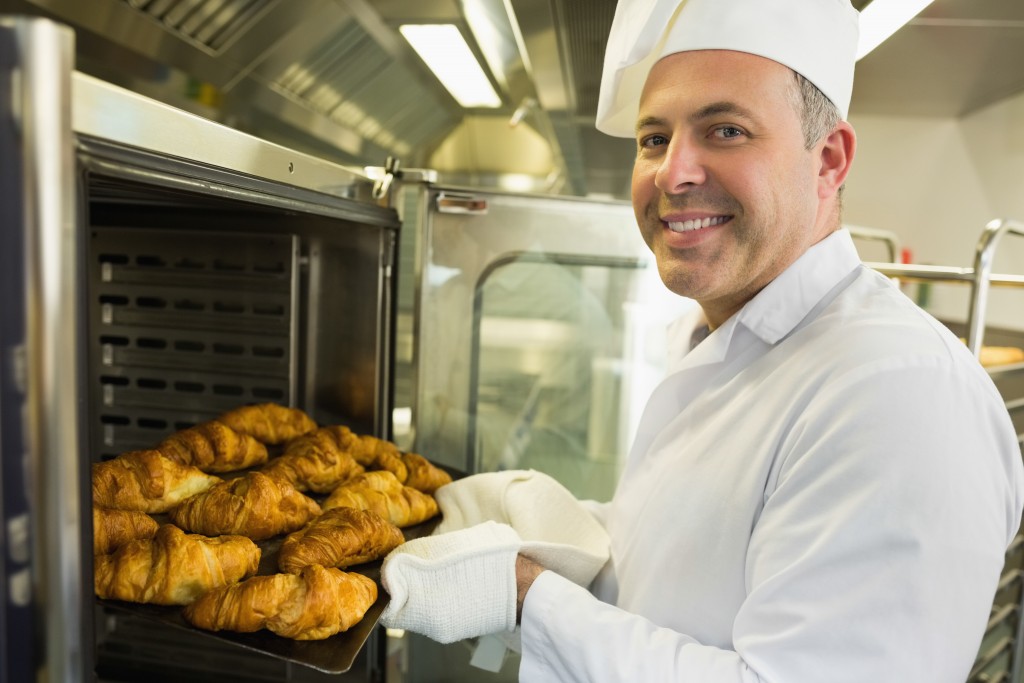Utah is a great place to bake. The humidity is pretty low, there’s lots of quartz for your kitchen countertops, and people generally like sweets and cakes. However, if you’re screwing up your baking recipes and you don’t know why, it might be because of the elevation. Unlike cooking, baking requires precise measurements — and elevation puts a little skew to those measurements.
1. Raise the Temperature
You’ll need to raise your oven temperature by 25°F when making breads, cookies, and pies. For more delicate cakes and chocolate, you’ll only need to increase the temperature by 15°F. Since you raised the temperature, you’ll need to cut your baking time by 15 to 25 percent. Check your oven frequently, especially on your first batches and note down the timing.
2. Cut a Bit of Sugar
If you find that your baked goodies are a little bit crumbly, you might need to cut back on the sugar. Not too much though — just about 1 tablespoon per cup. The dry Utah air coupled with the higher baking temperatures increases evaporation rates. You can offset this effect by cutting the listed amount of sugar.
3. Add More Water
Add 2-4 tablespoons of water if you’re in Salt Lake City. If you live a bit higher, add an additional 1 ½ tablespoons for every 1,000 feet of elevation above 4,000 feet. For cakes, you can use egg whites instead of water. Quartz tabletops are perfect because they’re non-porous, but if you’re kneading on another surface, you might need to add a little more water. Adding a bit more liquid into your recipe compensates for the higher baking temperature.
4. Add a Bit of Flour
 A little more flour helps keep the form of your baked goodies. Add a tablespoon of flour at 4,000 feet, and an additional tablespoon for every 1,500 feet of elevation.
A little more flour helps keep the form of your baked goodies. Add a tablespoon of flour at 4,000 feet, and an additional tablespoon for every 1,500 feet of elevation.
5. Use Less Yeast
Higher altitude enable breads to rise more easily. Reduce the amount of yeast in your recipe by about 25 percent. Your breads will rise a lot quicker so make sure to prepare an adequate container. If you feel that your dough needs more time to develop, consider placing it inside the refrigerator to slow down the rise of your dough.
6. Use Less Baking Powder and Baking Soda
Getting the right amounts of baking powder and baking soda in your mixes will be your biggest headaches when baking at high elevations. At 4,000 to 5,000 feet of elevation reduce your baking powder and baking soda to these ratios: 1 teaspoon to ⅞ teaspoon, 2 teaspoons to 1 ½ teaspoon, 3 teaspoons to 2 teaspoons, and 4 teaspoons to 2 ½ teaspoons. At 5,000 to 6,500 feet of elevation reduce your ratios to: 1 teaspoon to ½ teaspoon, 2 teaspoons to 1 teaspoon, 3 teaspoons to 1 ¼ teaspoon, and 4 teaspoons to 1 ½ teaspoons. Above 6,500 feet, you’ll need to further reduce your ratios to: 1 teaspoon to ¼ teaspoon, 2 teaspoons to ¾ teaspoon, 3 teaspoons to 1 teaspoon, and 4 teaspoons to 1 teaspoon.
It might take a few tries to get your recipes right, so start experimenting and get the right balance you need however high you are.
